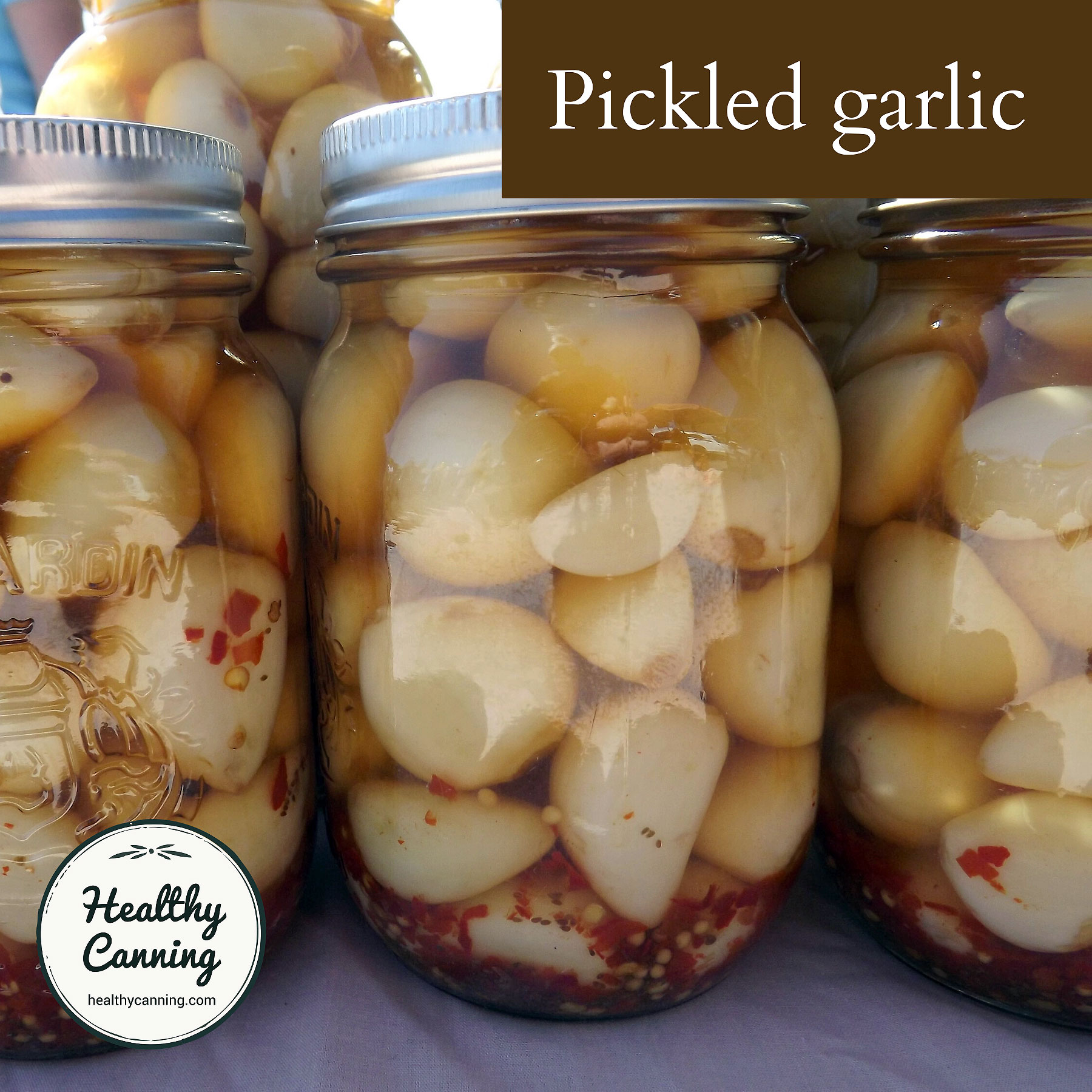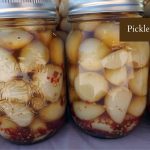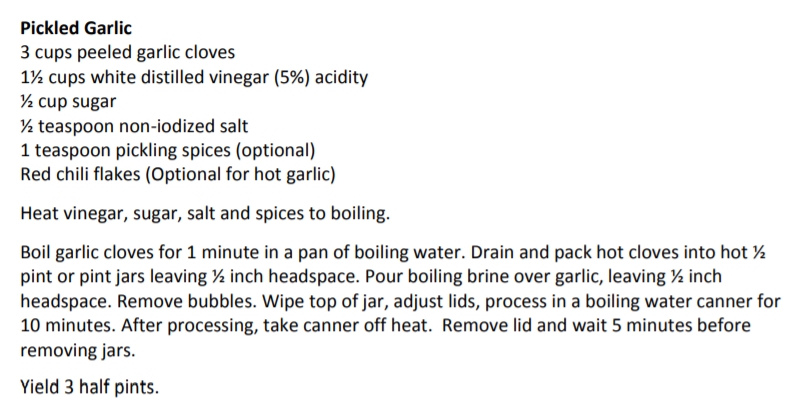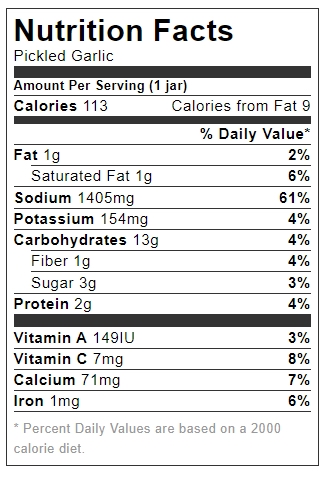
Pickled garlic in jars. Dennis / pixabay.com / 2012 / CC0 1.0
You can use home-canned pickled garlic as an antipasto, part of a relish tray or as a garnish for salads. Some people like it as a snack to just eat out of the jar.
The recipe
Jar size choices: quarter-litre ( ½ US pint / 250 ml / 1 cup / 8 oz)
Processing method: Water bath or steam canning
Yield: 5 x quarter-litre ( ½ US pint / 250 ml / 1 cup / 8 oz) jars
Headspace: 2 cm (½ inch)
Processing time: 10 minutes

Pickled Garlic
Ingredients
- 12 garlic heads (large)
- 625 ml white vinegar (2 ½ cups. 5% acidity or higher.)
- 250 ml white wine (dry. 1 cup / 8 oz.)
- 1 tablespoon pickling salt (aka canning salt)
- 1 tablespoon white sugar
- 1 tablespoon oregano (dried)
- 5 dried chiles (Optional. See notes)
Instructions
- Wash garlic heads. Separate the cloves of garlic, peel them, and set aside.
- In a large non-reactive pot combine everything from the vinegar down to the oregano.
- Bring pot to a boil, then reduce heat and let simmer for 1 minute.
- Add peeled garlic cloves, simmer another minute.
- Pack garlic cloves into jars, leaving 2 cm / ½ inch headspace.
- OPTIONAL: to each jar, add 1 dried chili pepper or ½ teaspoon dried chile flake.
- Top jars up with pickling liquid.
- Leave 2 cm (½ inch) headspace for either size of jar.
- Debubble, top up with more liquid as required to retain headspace.
- Wipe jar rims.
- Put lids on.
- Process jars in a water bath or steam canner for 10 minutes; increase time as needed for your altitude.
Nutrition
Reference information
How to water bath process.
How to steam can.
When water-bath canning or steam canning, you must adjust the processing time for your altitude.
Australia and New Zealand vinegar strength special notes.
What is the shelf life of home canned goods?
Recipe notes
12 heads of garlic will weigh roughly around 800 g / 1 ¾ lbs.
For the vinegar, you could use regular white distilled vinegar, or white wine vinegar. If you didn’t mind the possible discoloration, you could use apple cider vinegar. Be sure any vinegar used is 5% acid or higher.
For the dried chiles, you want small ones, not huge poblanos. You could use cayenne, chile de arbol, etc. Or about ½ teaspoon of dried chile flake per jar.
If you run out of brine, make some more up from vinegar and white wine in the same ratio, and zap it quickly in microwave to heat it (beware surge when removing liquids from microwave.)
The Complete Book gives this tip for peeling the garlic: “To peel garlic quickly, separate heads into cloves. Blanch in a large quantity of rapidly boiling water for 30 seconds. Boiling water must circulate around cloves to transfer heat, which loosens the skins. Be sure to let water return to a boil before counting the 30 seconds. Immediately immerse in cold water. Drain and peel.”
Jar size
The Complete Book from which this recipe comes calls for 250 ml / ½ pint size jars with 10 minutes processing time. Until we have time to remake this recipe again, we used for this post a stock photo which does indeed show pickled garlic in 500 ml / 1 US pint jars. If you want to use pint jars, we suggest you use a recipe from Oregon State Extension service, provided below.
Pickled garlic Oregon Recipe
If you want to use US pint (500 ml) jars for pickled garlic, here is a recipe for that from Oregon State Extension service:
Pickled garlic turning green or blue
The following para is from So Easy to Preserve:
“Why did the garlic cloves in my pickles turn green or bluish green? This reaction may be due to iron, tin or aluminum in your cooking pot, water or water pipes reacting with the pigments in the garlic. Or, the garlic may naturally have more bluish pigment and it is more evident after pickling. Immature bulbs should be cured 2 to 4 weeks at 21 C (70 F). The pickles are safe to eat.” [1]Andress, Elizabeth L. and Judy A. Harrison. So Easy to Preserve. University of Georgia Cooperative Extension. Bulletin 989. Sixth Edition. 2014. Page 193.
Recipe source
Kingry, Judi and Lauren Devine. Ball / Bernardin Complete Book of Home Preserving. Toronto: Robert Rose. 2015. Page 313.
Nutrition
Per 250 ml / 1 cup jar
References



E
Hi! Can you please comment about possible substitutes for wine in this recipe, such as verjus, grape juice, or another alcohol-free substitute? I understand that alcohol evaporates, but would prefer not to cook with alcohol.